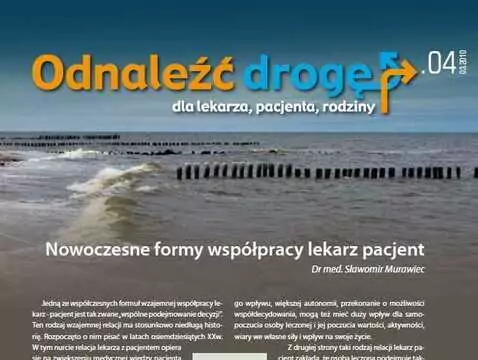One of the modern forms of mutual doctor-patient collaboration is so-called 'shared decision-making'. This type of mutual relationship has a relatively short history. It began to be written about in the 1980s. In this trend, the doctor-patient relationship is based on increasing the patient's medical knowledge and having more influence on treatment decisions. Both patient and doctor share information and insights about treatment options. Decisions are made jointly based on both people agreeing on a course of action. This doctor-patient relationship requires a lot of effort on both sides, but also offers new therapeutic possibilities.
On the one hand, it can give the person being treated a greater sense of influence over their own therapy. This greater sense of influence can translate into better cooperation in treatment, once the rules of this cooperation have been established together with the doctor and accepted by the person being treated. A sense of greater influence, greater autonomy, a belief in co-determination, can also have a great impact on the treated person's well-being and sense of self-worth, activity, self-confidence and influence on their life.
On the other hand, this kind of doctor-patient relationship assumes that the person being treated also takes some responsibility for their own health and treatment. For example, if she or he has jointly agreed a course of treatment with the doctor, the responsibility would require that she or he sticks to it. If there is a sharing of decision-making, there is at the same time a sharing of responsibility.
Shared decision-making is possible if the person being treated is provided with information about the disease he/she has been diagnosed with and the principles of its treatment. This is because it is difficult to make any decisions if you do not even have basic knowledge. This information can be provided by the doctor, in psycho-education classes, in the form of professional brochures and guides, and can be found on the Internet. The more reliable and truthful this information is, the more accurate the decision-making will be. Therefore, shared decision-making is possible when the patient has certain information about his illness, has understood it and wants to take it into account in the choice of treatment method. If someone does not have the data to make a judgement, it is difficult for them to make a decision and then stand by it.








